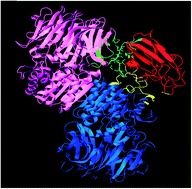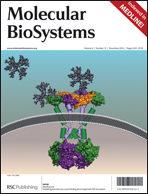This work describes the identification and characterization of a Sulfolobus solfataricus acylpeptide hydrolase, named APEHSs, recognised as a new protease target of the endogenous PEBP inhibitor, SsCEI. APEH is one of the four members of the prolyl oligopeptidase (POP) family, which removes acylated amino acid residues from the N terminus of oligopeptides. APEHSs is a cytosolic homodimeric protein with a molecular mass of 125 kDa. It displays a similar exopeptidase and endopeptidase activity to the homologous enzymes from Aeropyrum pernix and Pyrococcus horikoshii. Herein we demonstrate that SsCEI is the first PEBP protein found to efficiently inhibit APEH from both S. solfataricus and mammalian sources with IC50 values in the nanomolar range. The 3D model of APEHSs shows the typical structural features of the POP family including an N-terminal β-propeller and a C-terminal α/β hydrolase domain. Moreover, to gain insights into the binding mode of SsCEI toward APEHSs, a structural model of the inhibition complex is proposed, suggesting a mechanism of steric blockage on substrate access to the active site or on product release. Like other POP enzymes, APEH may constitute a new therapeutic target for the treatment of a number of pathologies and this study may represent a starting point for further medical research.

You have access to this article
 Please wait while we load your content...
Something went wrong. Try again?
Please wait while we load your content...
Something went wrong. Try again?


 Please wait while we load your content...
Please wait while we load your content...